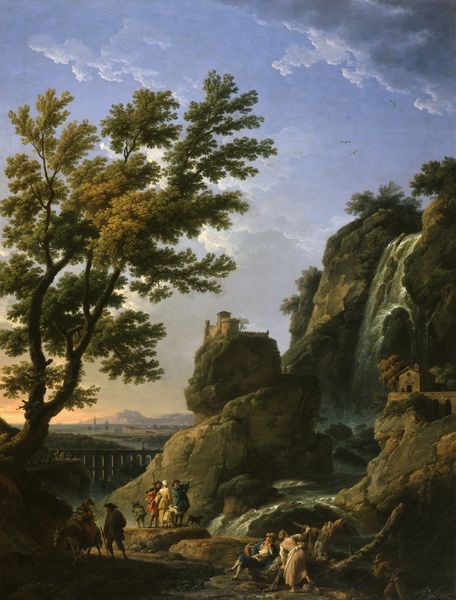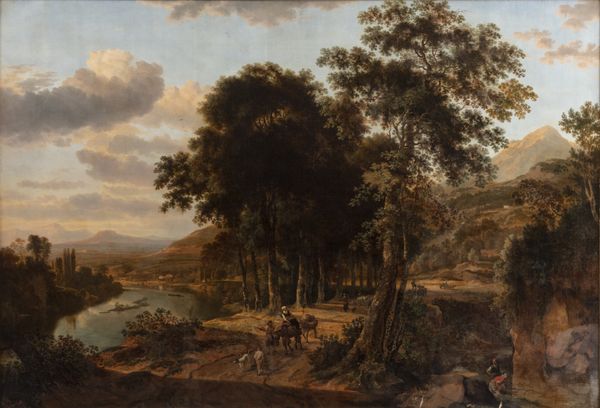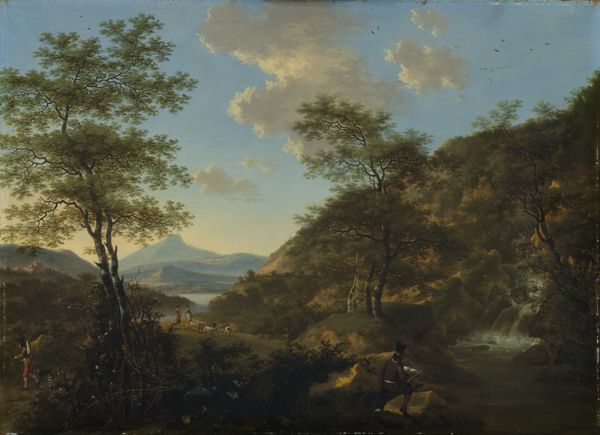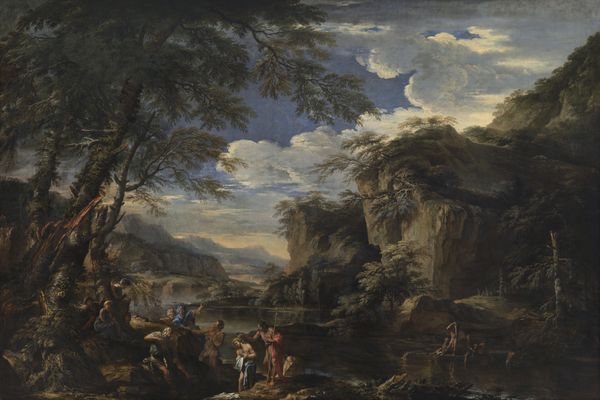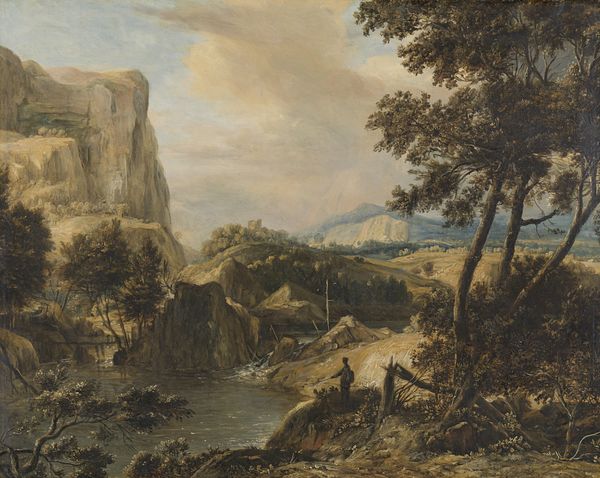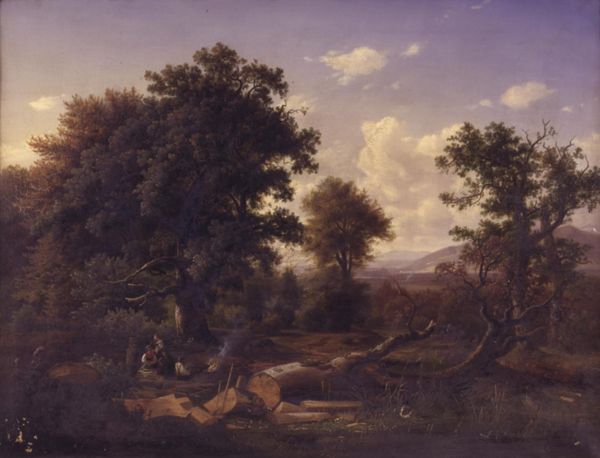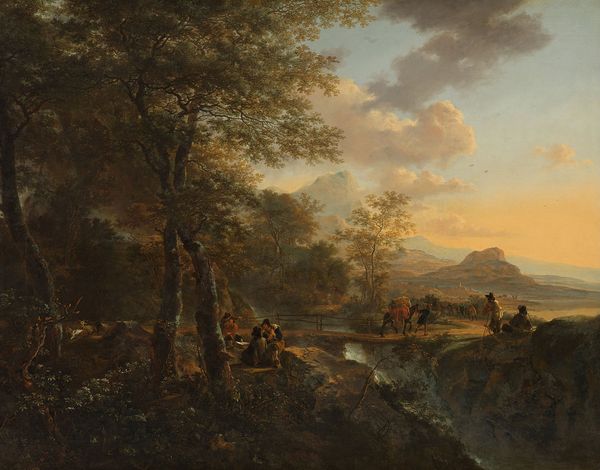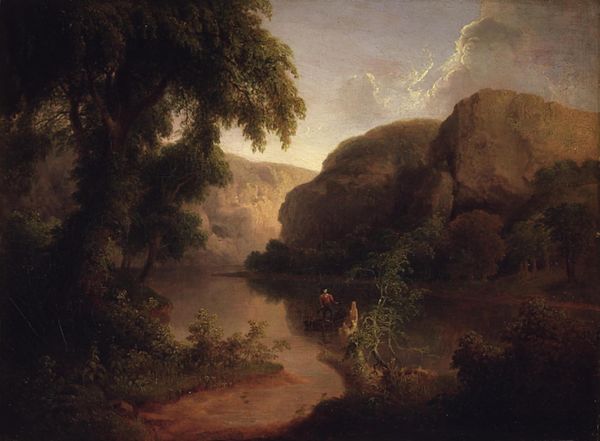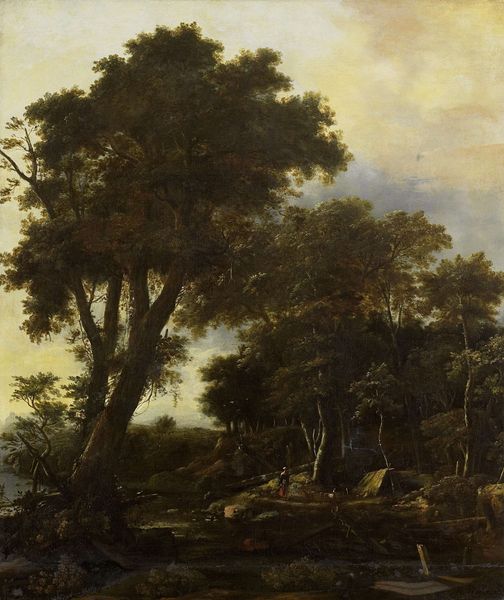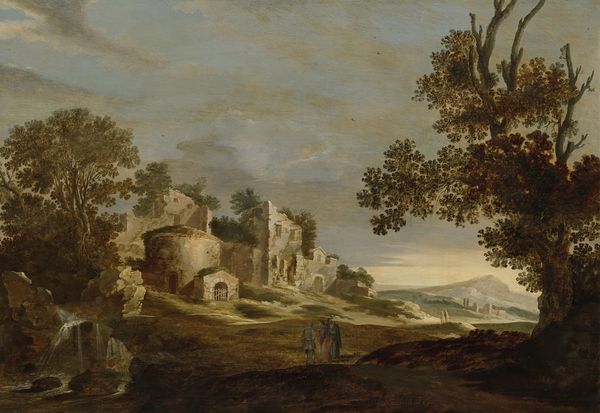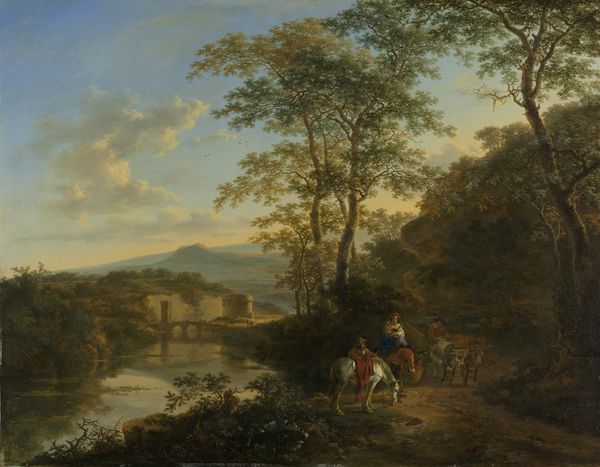
painting, oil-paint, canvas
#
baroque
#
painting
#
oil-paint
#
landscape
#
oil painting
#
canvas
#
genre-painting
#
realism
Dimensions: 178 cm (height) x 210 cm (width) (Netto)
Curator: Looking at "Wood-Clad Rocks with Waterfall" completed sometime between 1630 and 1669, I’m immediately struck by how the composition is divided—that hazy, almost dreamlike distance against the dark, textured foreground. It’s a landscape brought to life in oil paint. Editor: That dreamlike quality hits me first too. The muted tones make it feel like looking at a memory, not a place. I’m thinking about the practical aspects, the physicality of moving canvas and pigments, potentially ground by apprentices, to construct this illusion of untouched nature. It’s artifice layered onto material reality. Curator: I love that you bring up memory. To me, Johan le Ducq, the artist, wasn’t just painting a landscape, he was capturing an experience. You can almost feel the cool spray of the waterfall. See the shepherd there, tiny in comparison to the landscape's majesty. Editor: That "majesty" is skillfully constructed, though, isn't it? The layers of the painting, from the application of priming to the detailed, almost miniature figures of the riders, the painting depends on its constituent materials to work, which required not only the skilled labor of an artist but of a workshop. This division of labor, often hidden, really gets my interest here. Curator: I suppose. It's the balance that gets me. The wildness of the rocks and water offset by the human figures reminds me that humanity is but one small part of the world, but that they can shape their relationship with that world, which the painter captured. Editor: Shaped through consumption. Think about the patronage system, the purchase of this landscape allowing a certain class to see themselves reflected within "nature." That transaction – the literal buying and selling of this idealized scene – it all becomes part of the picture. It shows the interaction between art, materiality, and the emerging mercantile culture of the Dutch Golden Age. Curator: So while I lose myself in the romanticism of this little world, you’re examining the nuts and bolts – the physical world in this imagined world. It feels that maybe we are both viewing the whole landscape with complementary lenses. Editor: Exactly! I hope listeners start noticing the tangible ways art, economics, and daily life are always interwoven, while you invite to linger for a while within its picturesque peace.
Comments
No comments
Be the first to comment and join the conversation on the ultimate creative platform.
